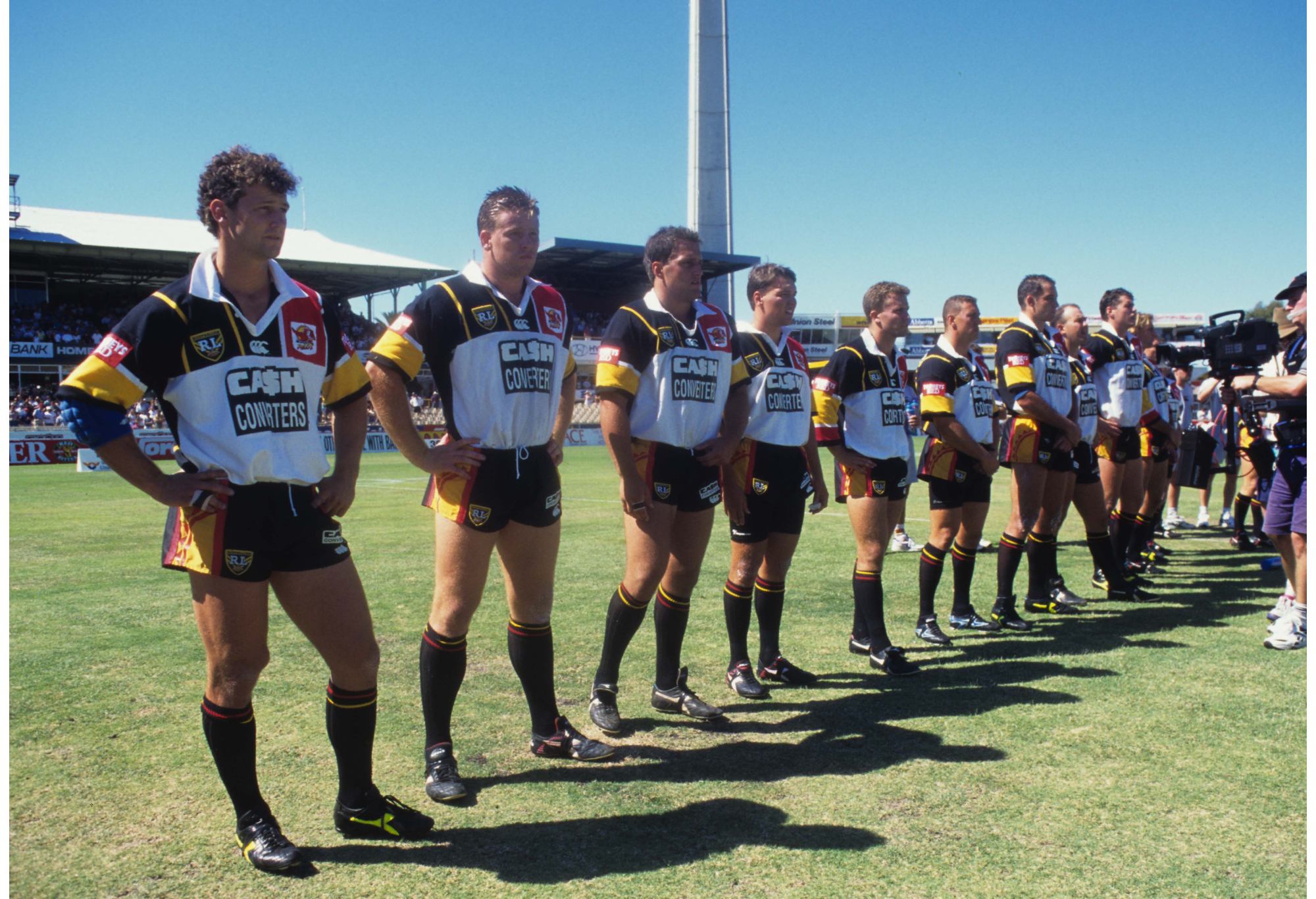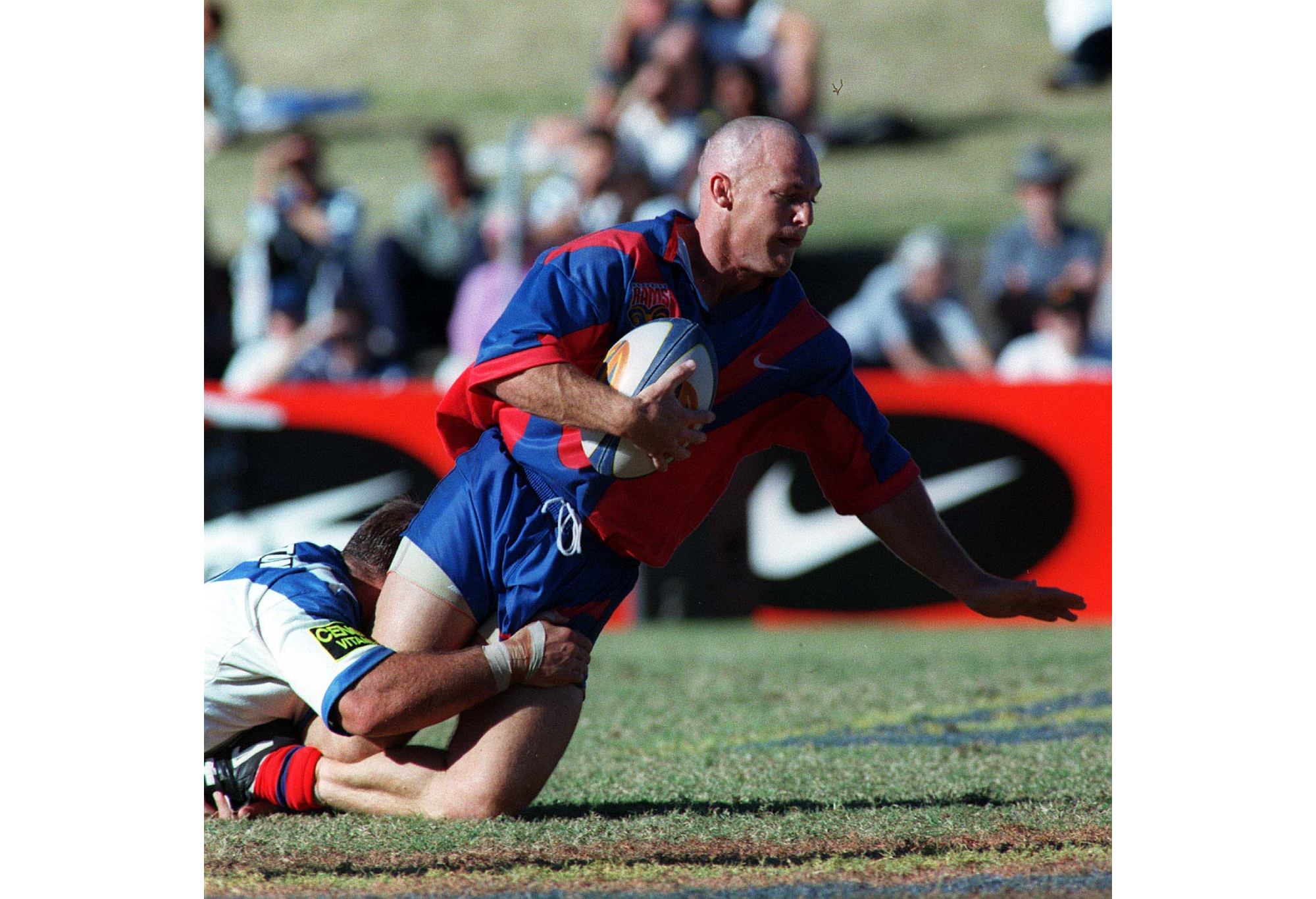Expansion dilutes talent in professional sports leagues. Always. And rapid expansion in rugby league drains the pool so that players who were not considered up to scratch are suddenly good enough for the NRL again.
It happened in the 1990s when the premiership hastily went from 16 teams to 20 and history is about to repeat to a certain extent with the 17th franchise set to be joined by another one in a couple of years and two more soon after that.
“Those who cannot remember the past are condemned to repeat it,” wrote George Santayana in 1905, a Spanish philosopher and Harvard graduate who there is little to suggest knew anything about rugby league but he couldn’t have been more spot on.
Players circa 1993-94 who would regularly wear jerseys 14-26 (that’s reserve grade for the uninitiated or too young to remember) in the old Big League magazine then became regular starters in the new ARL competition when the NSWRL made the mistake of adding four teams instead of its original plan of one of two in 1995. (Magazines were made of paper and people used to read them, if any further explanation is required there).
CLICK HERE for a seven-day free trial for your favourite sport on KAYO
Nearly three decades on and the Dolphins have supposedly been locked in as an unqualified success because they upset the Roosters and Raiders in their first two games. So of course that proves that there’s enough talent to go round and the NRL should add more and more sides.

Felise Kaufusi takes on the defence in the Dolphins’ win over Canberra. (Photo by Bradley Kanaris/Getty Images)
By that logic, if they had lost their opening games, would expansion have then been put on the backburner for another few years?
If the Dolphins now go on a losing streak and finish down the bottom of the ladder, as most experts and every bookmaker predicted in the pre-season, will the ARL Commission head honchos then determine that the talent pool is not deep enough?
Of course they won’t.
It’s great that the Dolphins have defied the odds and grizzly old coach Wayne Bennett has conjured up a couple of upset wins with his roster of veterans, cast-offs and rising stars.
Whether they can sustain a spot away from the bottom of the ladder with a lack of depth when injuries inevitably hit is another question that remains to be seen.
The Dolphins, or any of the bids that tried to get in for 2023, were always going to draw a decent following among the fans of South-East Queensland.
Another team in the greater Brisbane area should have happened decades ago. The poor old Crushers were kicked out when the ARL and Super League formed the NRL 25 years ago even though they had money in the bank – a rarity for any club in most eras.
The NewsCorp-owned Broncos wanted a monopoly in the Queensland capital and as part of the peace deal between the warring parties – the ARL and NewsCorp (no conflict of interest there), the Crushers and eventually Gold Coast Chargers disappeared into thin air.
Brisbane then enjoyed nigh on a decade where their closest geographical rival was Newcastle before the Titans re-emerged on the Gold Coast to play the role of downtrodden little brother.
This is, after all, Australia’s third-biggest city which now has a population of 2.3 million and one that lives and breathes rugby league more so than any in the land.
The ruthless but not ruthless enough culling of teams in the Sydney area at the turn of the century turned 12 traditional teams into nine with only North Sydney vanishing altogether after their failed joint venture with Manly.
With expansion back on the table, the Bears are yet again mounting a desperate bid to get back in the big league in some way shape or form, hoping to attach their colours, mascot and a couple of games at North Sydney Oval each year to one of the prospective expansion destinations.
And who could have predicted that China’s supposed threat to making incursions into the South Pacific could have helped the NRL widen its footprint?

Western Reds captain Brad Mackay with the foundation team in 1995. (Getty Images)
Back in the Super League war, the world’s most populous country was supposedly going to be a new market for the rebel competition when its chief executive John Ribot infamously claimed Allan Langer and Gorden Tallis would become household names in China.
Now the Australian government is keen for the gospel of rugby league to be used in the Pacific with a franchise based in Cairns representing Papua New Guinea, Samoa, Tonga and Fiji, playing occasional games in the islands.
That team could be up and running as early as 2025.
It’s one of those very rugby league concepts that sounds good in theory but will be extremely difficult to pull off.
Like the Dolphins, there’s a massive fan base ready and waiting – the PNG population alone of 9 million where rugby league is the national sport is nearly double that of New Zealand although Australia’s closest neighbour to the north is still very much a developing nation despite a recent influx of foreign investment.
The problem for the Dolphins, a Pasifika team in Cairns and any other expansion sides on the horizon is attracting talent.
Last year the Dolphins were knocked back time and time again by high-profile free agents with player managers using them as a leverage point to get a better deal at their existing club or elsewhere.

Former international Kerrod Walters is tackled while playing for the Adelaide Rams in 1997. (Photo: Getty Images)
There are few marquee names on the market for 2024 let alone the following year as representative stars get squirreled away long term by their existing clubs – Brisbane forward Patrick Carrigan (until 2028 no less) and Kangaroos captain James Tedesco (adding 2025 onto his Roosters tenure) are two such examples in the past few days alone.
Expansion clubs should get a helping hand from head office. With no draft in place like the AFL’s set-up, the NRL could give start-ups an inflated salary cap compared to existing clubs or a franchise player option where one star’s wages don’t count on the books for the first few years.
If and when the 18th franchise gets off the ground, there needs to be at least a couple of years if not more before two more are added and if they’re not located in Perth and Adelaide then the ARL Commission might as well admit they’ve given up on the NRL ever being a truly national rugby league.
It was a mistake to abandon the potential in those markets after just a few years in the late 1990s, sacrificed by administrators with vested interests in poorly run Sydney clubs.































































































